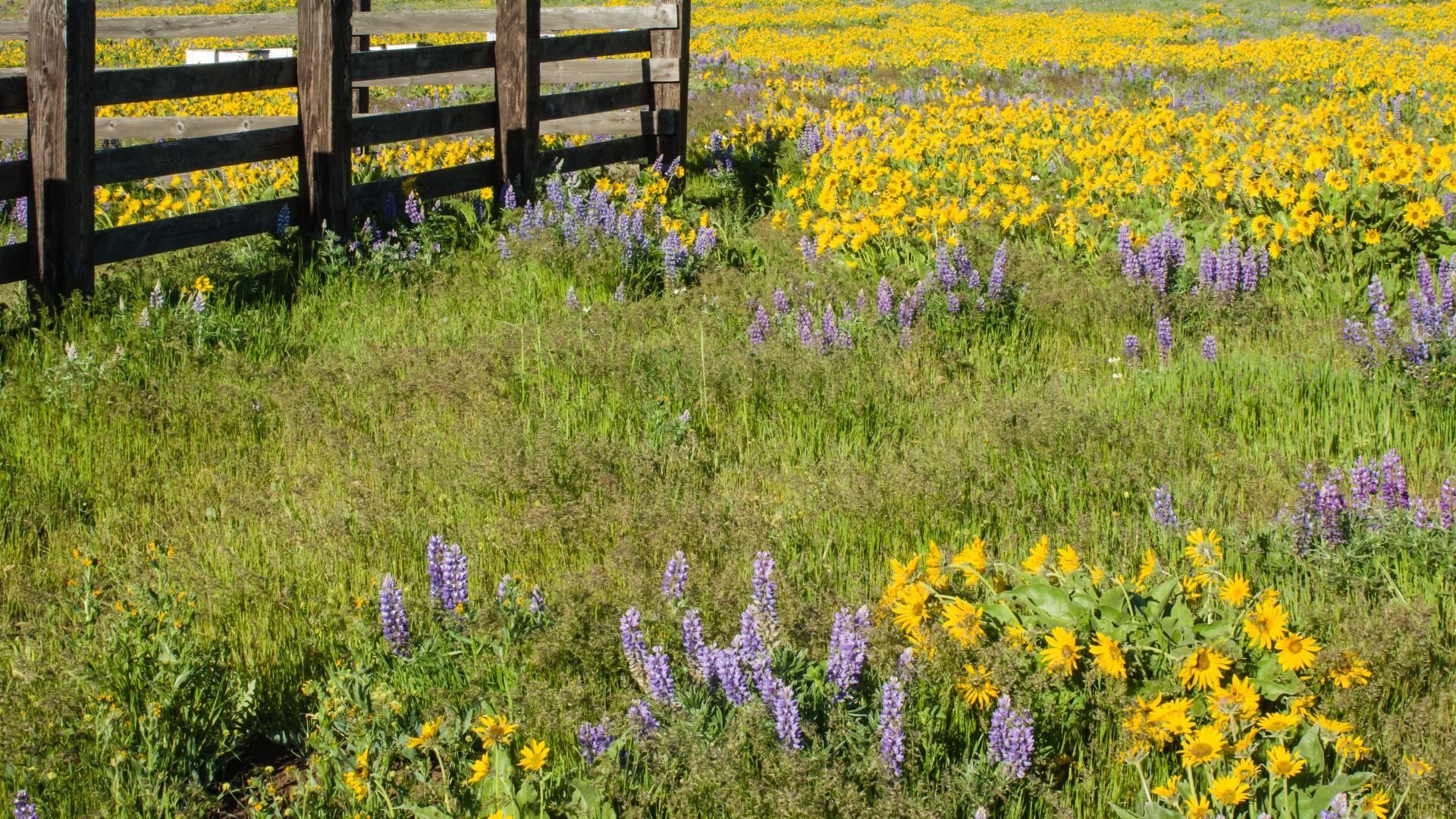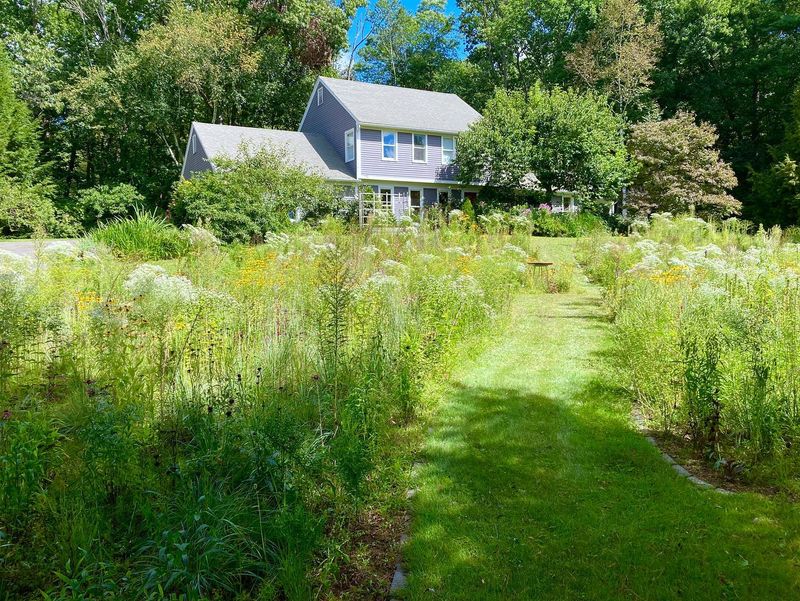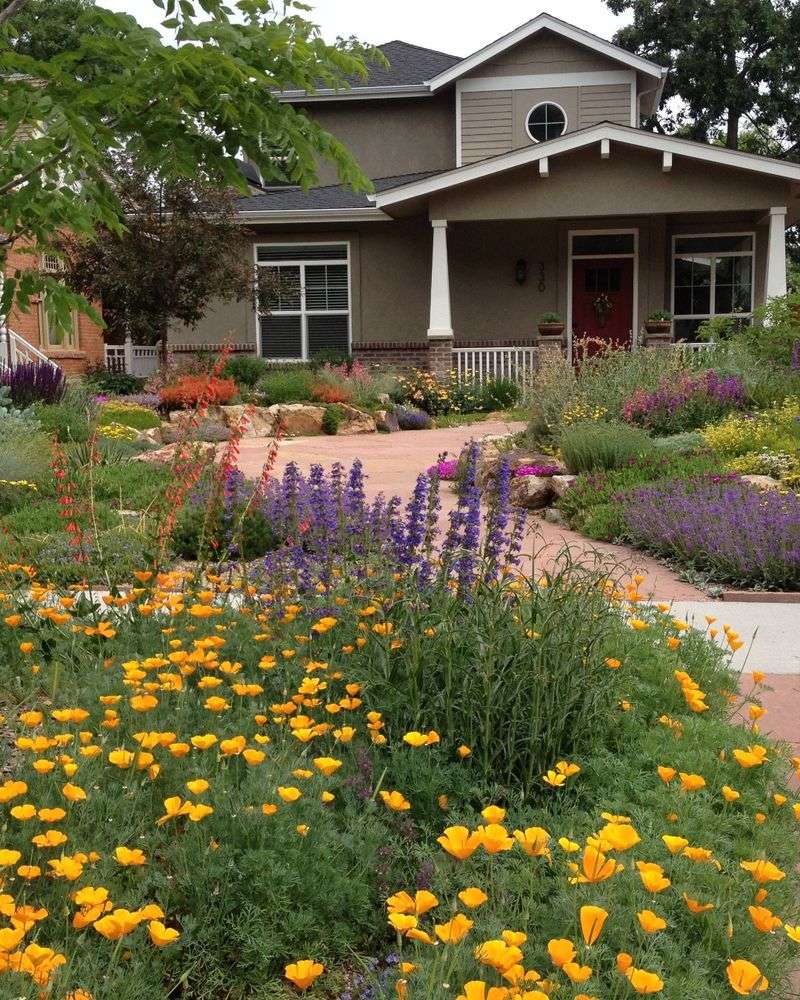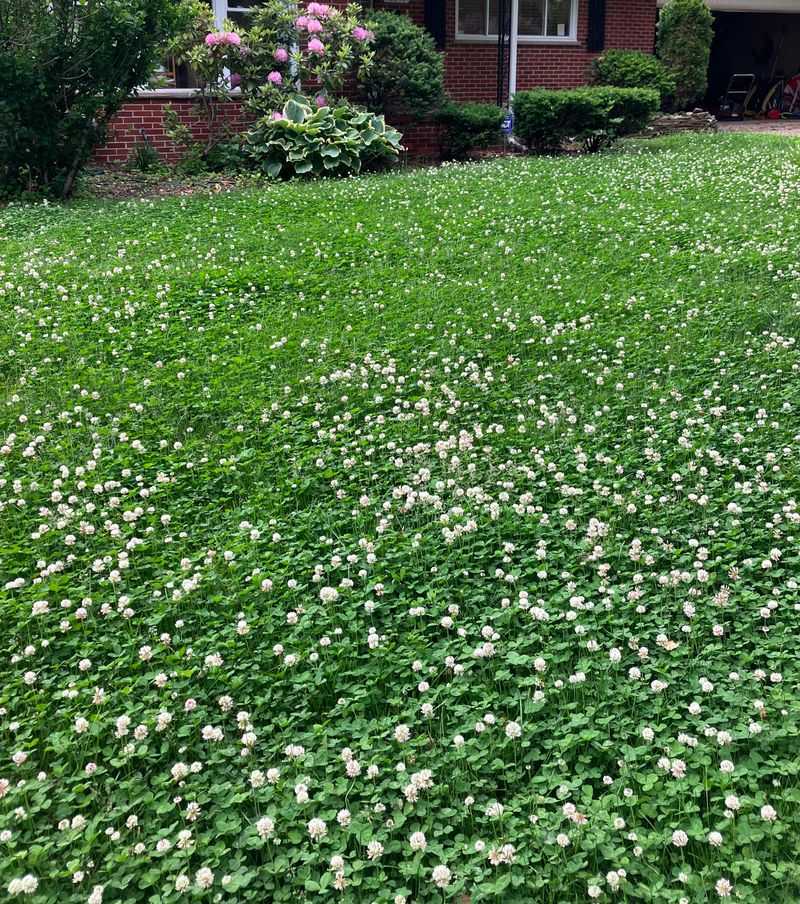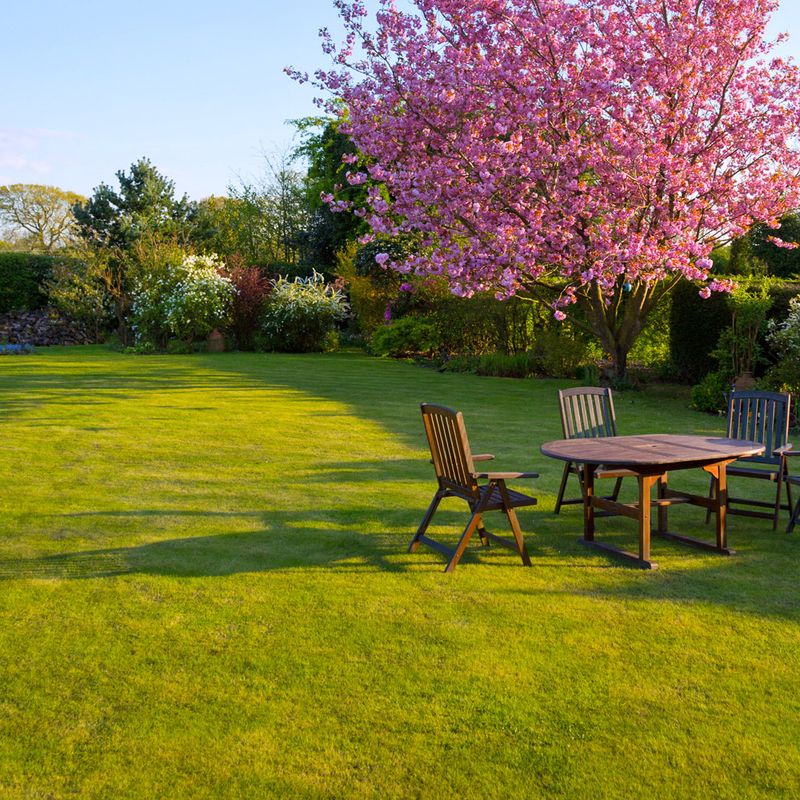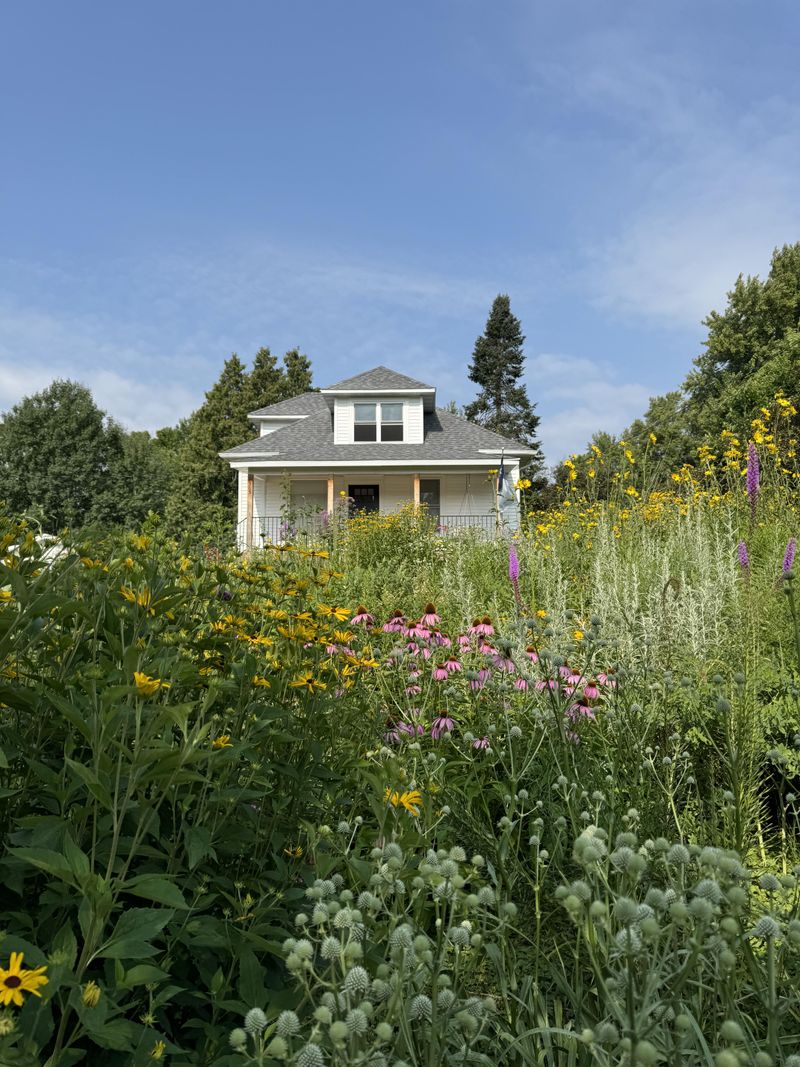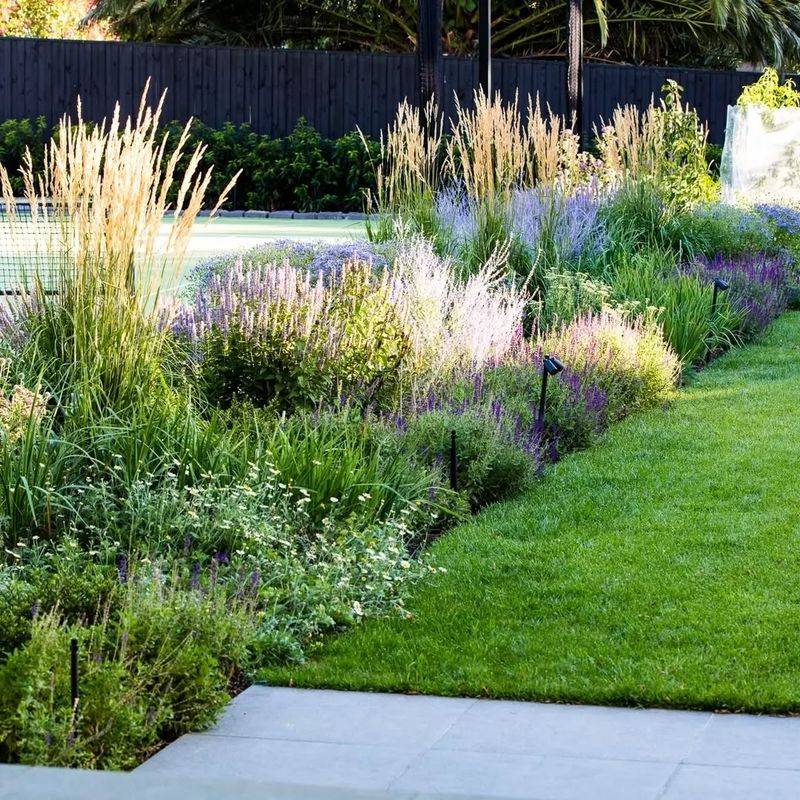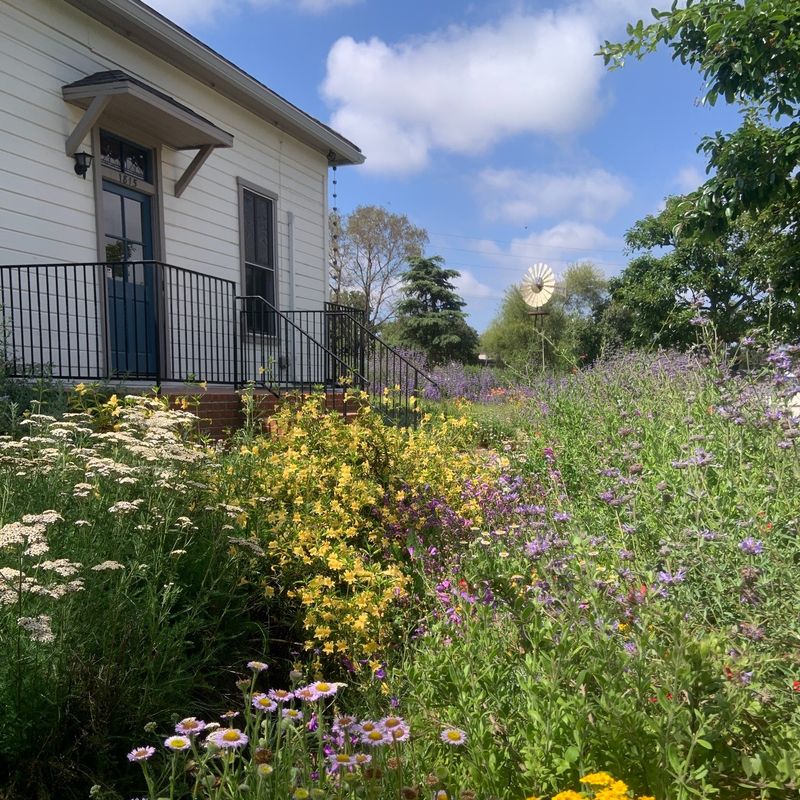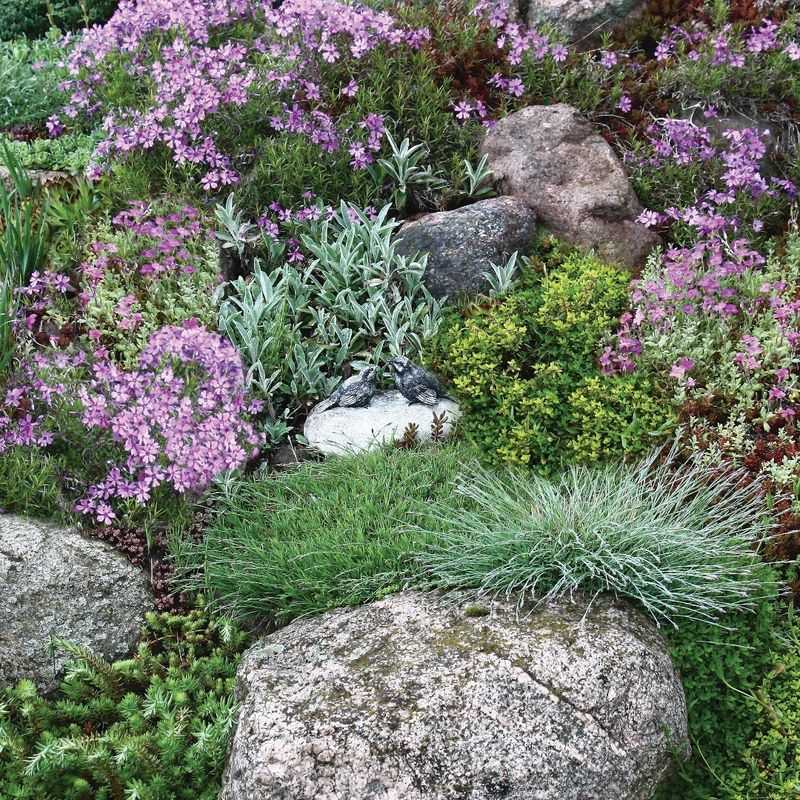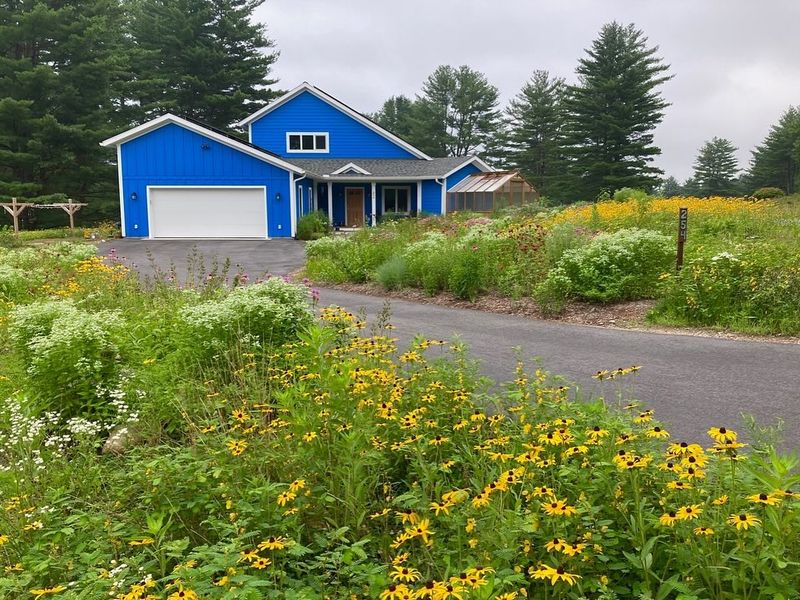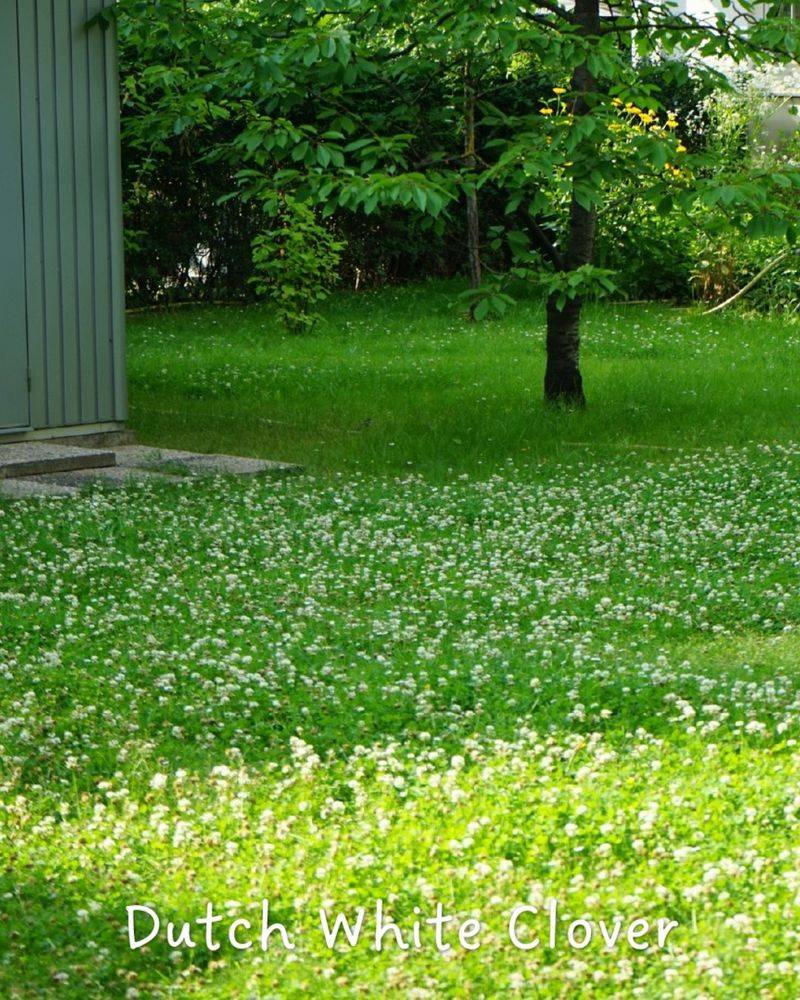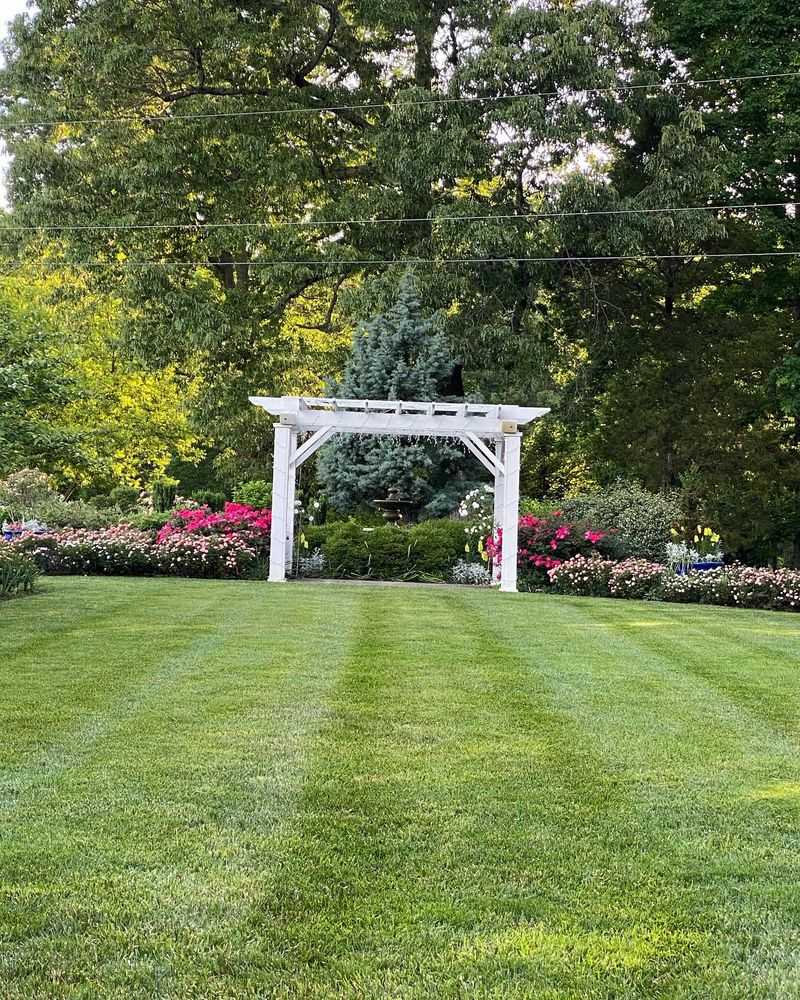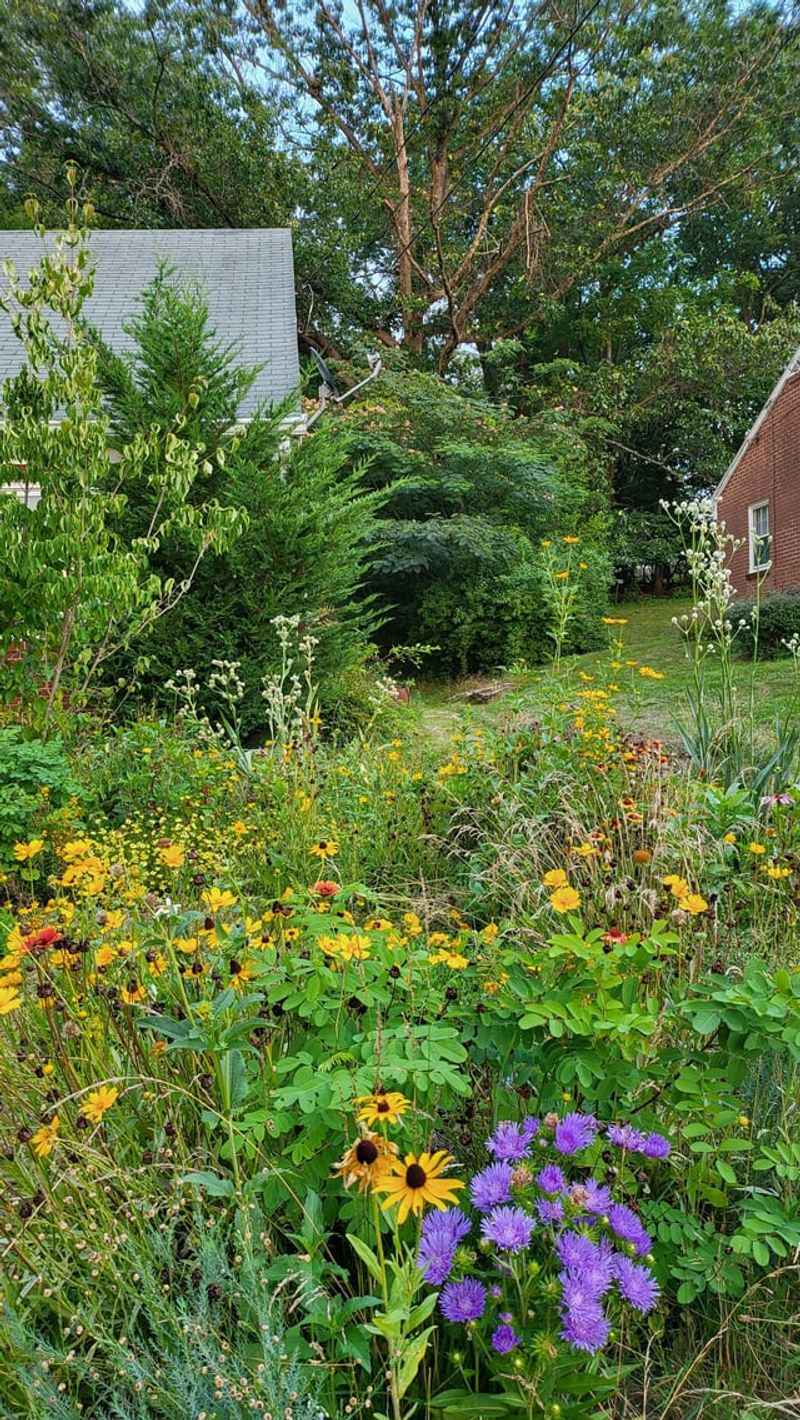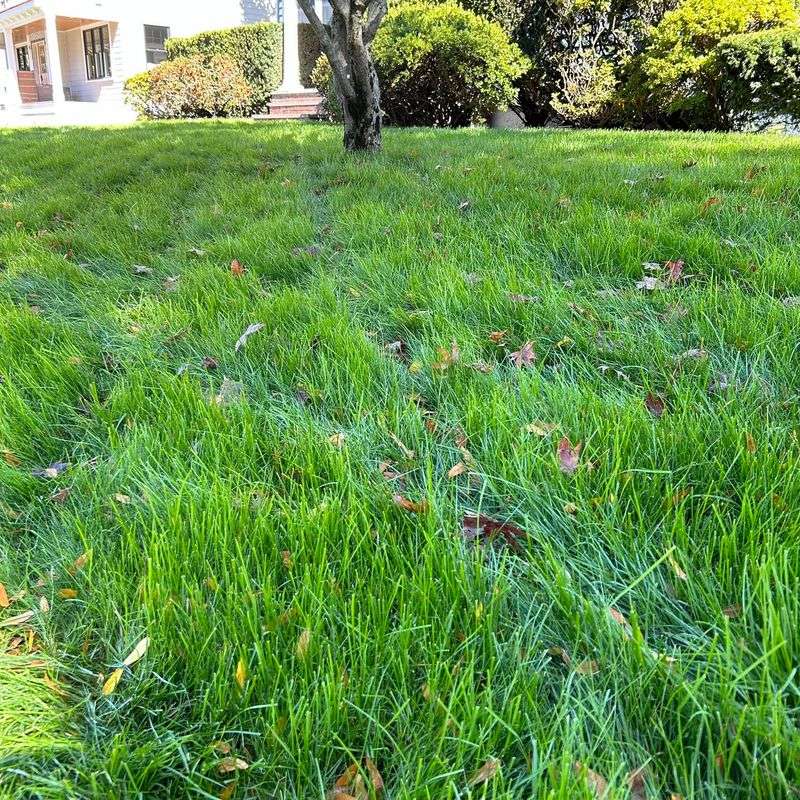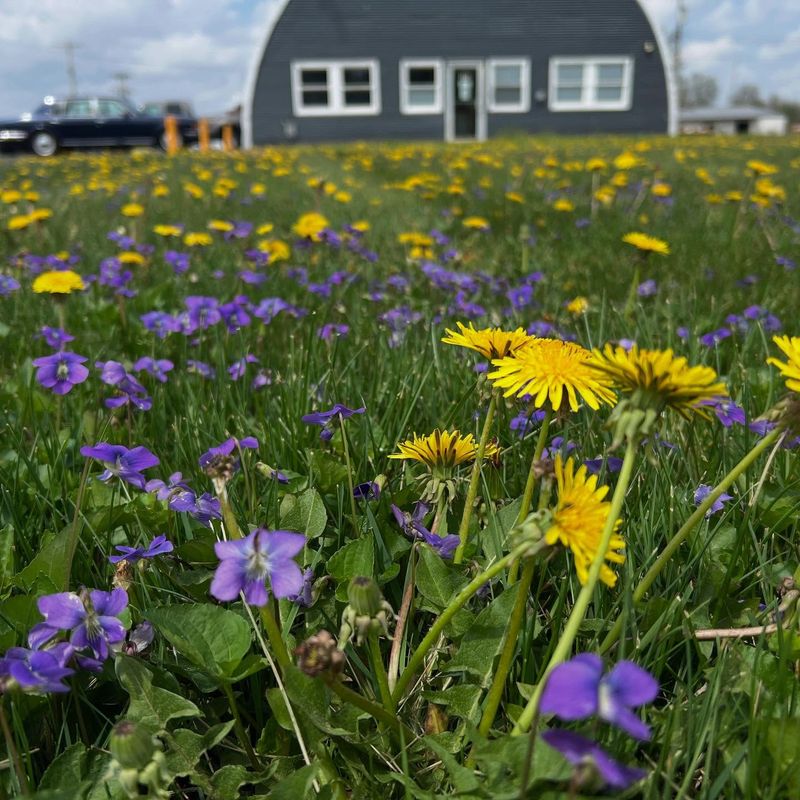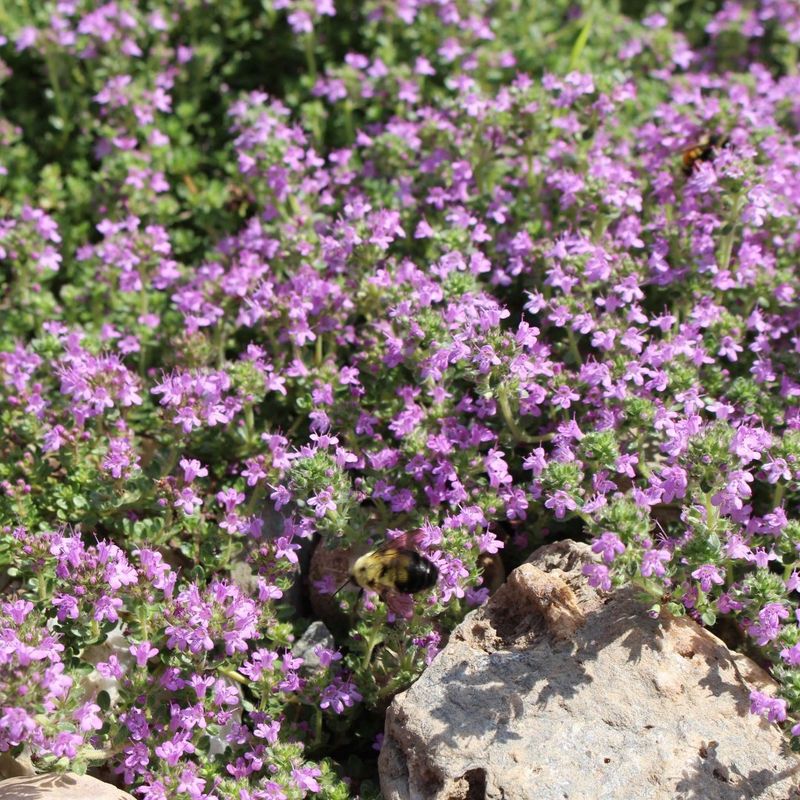Swapping out traditional grass for a meadow lawn was one of the best garden choices I ever made. It’s low-maintenance, full of life, and looks like something out of a countryside daydream.
Bees, butterflies, and even little songbirds started showing up like they owned the place. If you’re tired of mowing and watering nonstop, this might just be your new favorite project.
I’ll walk you through all the perks—and how to get that dreamy meadow look off to a strong start.
1. Water Conservation Champion
Once established, meadow lawns require significantly less water than traditional grass. Native wildflowers and grasses have deeper root systems that tap into groundwater sources, making them naturally drought-resistant.
During hot summer months when your neighbors are constantly dragging hoses around, your meadow will largely fend for itself. This water-wise approach can cut your outdoor water usage by up to 75%, saving both natural resources and money on your utility bills.
2. Pollinator Paradise
Meadow lawns create crucial habitat for bees, butterflies, and other beneficial insects that are disappearing at alarming rates. The diverse flowers provide nectar sources throughout the growing season, not just during brief blooming periods.
You’ll witness fascinating ecological relationships right outside your window as different pollinators visit throughout the day. This biodiversity boost helps neighboring gardens too, as increased pollinator presence can improve fruit and vegetable yields by up to 30%.
3. Mowing Time Slashed
Say goodbye to your weekend mowing routine! Meadow lawns typically need cutting just once or twice per year, usually in late fall or early spring. This dramatic reduction in maintenance frees up your weekends for activities you actually enjoy.
The time savings are substantial – the average homeowner spends about 70 hours per year mowing conventional lawns. With a meadow, you’ll reclaim those summer days while your landscape largely takes care of itself, growing into natural patterns that don’t require constant human intervention.
4. Chemical-Free Living
Meadow lawns thrive without chemical fertilizers, pesticides, or herbicides that conventional lawns often depend on. Native plants have evolved natural defenses against local pests and diseases, making synthetic treatments unnecessary.
This chemical-free approach creates a healthier environment for children, pets, and wildlife. You’ll notice more songbirds visiting as insect populations increase naturally. The absence of runoff chemicals also protects local waterways from pollution that can harm fish and aquatic ecosystems.
5. Carbon Sequestration Superstar
The deep root systems of meadow plants store significantly more carbon underground than shallow-rooted grass lawns. Some prairie plants extend roots 15 feet deep, creating natural carbon sinks that help fight climate change.
Unlike traditional lawns that release carbon when frequently mowed, meadows lock carbon away in soil. Research shows that converting grass to meadow can sequester up to 3 tons of carbon per acre annually. This makes your yard part of the climate solution rather than contributing to the problem.
6. Year-Round Visual Interest
Unlike conventional lawns that look virtually identical year-round, meadows transform with the seasons. Spring brings fresh green growth and early bloomers, summer explodes with colorful flowers, and fall showcases golden grasses and seed heads.
Even winter meadows offer beauty through structural seed heads, frost-covered grasses, and architectural plant forms. This ever-changing landscape provides constant visual delight, with new colors and textures emerging each month. Your yard becomes a living calendar marking seasonal transitions.
7. Wildlife Habitat Creation
Meadow lawns provide food, shelter, and nesting materials for birds, small mammals, and beneficial insects. The diverse plant structure creates microhabitats at various heights, supporting more species than a monoculture lawn ever could.
Birds find seeds and insects to eat, while ground-nesting species may establish homes in taller sections. Small mammals appreciate the cover from predators. This habitat connectivity is especially important in suburban areas where natural spaces have been fragmented by development.
8. Erosion Control Excellence
The extensive root systems of meadow plants hold soil in place far better than conventional turf grass. During heavy rain events, meadows absorb water rather than allowing runoff that carries away topsoil.
This erosion prevention is especially valuable on slopes or areas prone to water flow. The varied plant structures also slow water movement across the surface, giving it more time to percolate into the ground. This reduces flooding risks and helps replenish groundwater supplies naturally.
9. Noise Reduction Buffer
The varied heights and densities of meadow plants absorb and diffuse sound waves more effectively than short grass. This natural sound barrier can noticeably reduce traffic noise and other urban disturbances around your home.
The rustling of grasses and movement of plants adds pleasant white noise that masks less desirable sounds. Many homeowners report their meadow areas create a sense of peaceful seclusion, even in busy neighborhoods. This acoustic benefit combines with visual screening to enhance privacy.
10. Temperature Moderation Magic
Meadow lawns help cool your property naturally through transpiration and reduced heat absorption. Unlike traditional lawns that can become dormant and heat-reflective during summer, meadow plants actively cool the air around them.
The diverse plant heights create beneficial air circulation patterns. Studies show areas with native meadow plantings can be 5-8 degrees cooler than conventional lawns during heat waves. This natural cooling effect can reduce your air conditioning needs and create more comfortable outdoor living spaces.
11. Soil Health Improvement
Meadow plants build soil health through their diverse root structures and natural life cycles. As roots grow and die back seasonally, they add organic matter and create channels for water and air to penetrate compacted soil.
Different plant species support varied soil microorganisms, creating a rich underground ecosystem. Over time, even poor soils transform into fertile ground as the meadow essentially fertilizes itself. This self-improving system eliminates the need for artificial soil amendments and creates increasingly better growing conditions.
12. Native Plant Preservation
Meadow lawns provide refuge for native plant species that are disappearing from many landscapes. By incorporating local wildflowers and grasses, you help preserve genetic diversity and plants that have evolved in your region for thousands of years.
These plants represent important cultural and ecological heritage. Many native plants have historical uses as food or medicine that connect us to the land’s history. Creating space for these species ensures they’ll continue to exist for future generations to appreciate and learn from.
13. Educational Opportunities Abound
A meadow lawn transforms your yard into a living classroom for children and adults alike. The constantly changing plant and animal life creates endless opportunities to observe natural cycles, identify species, and understand ecological relationships.
Families can track butterfly life cycles, identify bird species, or learn plant names together. Many schools now incorporate meadow visits into science curriculum. Your yard becomes a conversation starter that sparks curiosity about the natural world and how different species interact.
14. Property Value Enhancement
Well-designed meadow lawns can significantly boost property appeal and value. As sustainable landscaping becomes increasingly desirable, homes with established low-maintenance, eco-friendly yards stand out in the real estate market.
The unique aesthetic and reduced maintenance costs appeal to many buyers. Real estate professionals report that thoughtfully designed natural landscapes can increase property values by 5-15%. Additionally, the reduced water bills and maintenance expenses represent significant long-term savings that smart homebuyers recognize and value.
15. Simple Establishment Methods
Creating a meadow lawn is surprisingly straightforward. Start by removing existing grass through sheet mulching or solarization rather than chemicals. Select a native seed mix specifically formulated for your region’s conditions to ensure plants are adapted to your climate.
Fall or early spring seeding works best in most regions. Scatter seeds on prepared soil and lightly rake them in – don’t bury them too deep! Keep the area consistently moist until seedlings establish, then reduce watering gradually. Most meadows reach their full glory in their second or third year.

